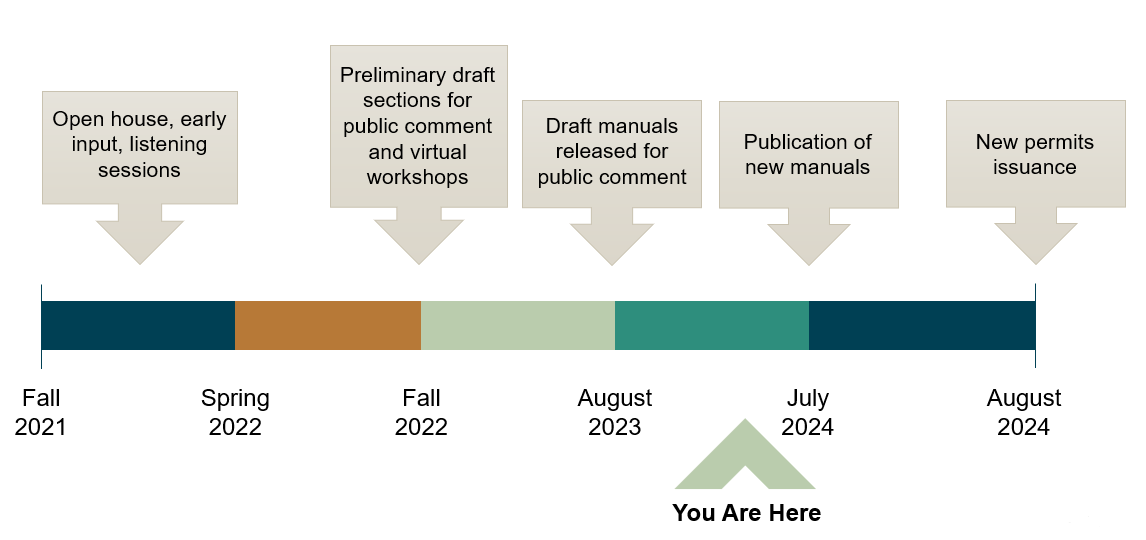
It’s a Thursday afternoon in Vancouver, the second official day of the APWA Washington Chapter Spring Conference, and a crowd is gathering in the Spruce Room. Osborn’s very own engineers, Maria Peraki, PhD, PE and Courtney Dale, PE stand behind the podium, ready to impart knowledge on the growing audience. The topic? How to navigate the changes being made to the Ecology Stormwater Manual. To the untrained ear, this may seem like an expansive, complex subject to tackle, but thanks to the expertise of Maria and Courtney, participants were able to leave the session with a better understanding of the revisions, the highlights of which are outlined below.
To begin, the manual revisions are separated into consistency edits, minor edits, and significant changes. The consistency edits are meant to improve the statewide consistency between Eastern Washington (EWA) and Western Washington (WWA) manuals while the minor edits enhance the overall organization of the manuals, providing more clarity and better flow for the reader. The real fun starts in the significant changes.
Maria explains newly defined exemptions for pavement maintenance and underground utility projects, providing examples of situations where a roadway regrading and trenching for installation of a stormwater system would not be exempt, while trenching for water main maintenance as part of a full project scope would be considered exempt. She also covers new development and redevelopment project thresholds. For the WWA manual, thresholds for redevelopment projects, both road-related and non-road-related, were updated. The EWA manual saw an increase in minimum thresholds for new and redevelopment projects, the purpose being so that small projects do not need to apply core elements. This is a significant change for road-related projects that could potentially increase the need for BMP design for flow control and water quality. Maria ends this section with recommendations to investigate how new requirements may affect projects, consider new thresholds in future planning efforts, and examine how the changes might influence planning for regional facilities.
The mic is passed to Courtney, who is covering several significant changes. Not only does a new wetland hydroperiod standard increase the allowable mean monthly discharge for winter months, but there is a new high performance bioretention to treat phosphorus, and updated guidance for issues such as climate change, nitrogen and phosphorus, toxic organics, and more. She recommends reviewing wetland criteria to identify any additional data that may be needed earlier in the process, considering bioretention as an option when identifying water quality best management practices, and making sure to keep an eye out for requirements related to climate change and new toxins, including these issues within design considerations whenever possible.
With the publication of new manuals coming up in July 2024, it has become all the more essential to review the changes and ensure that Project Managers and other relevant stakeholders are aware of how they may impact new projects. In the words of Maria and Courtney, be sure to stay informed, discuss, plan, and apply!






